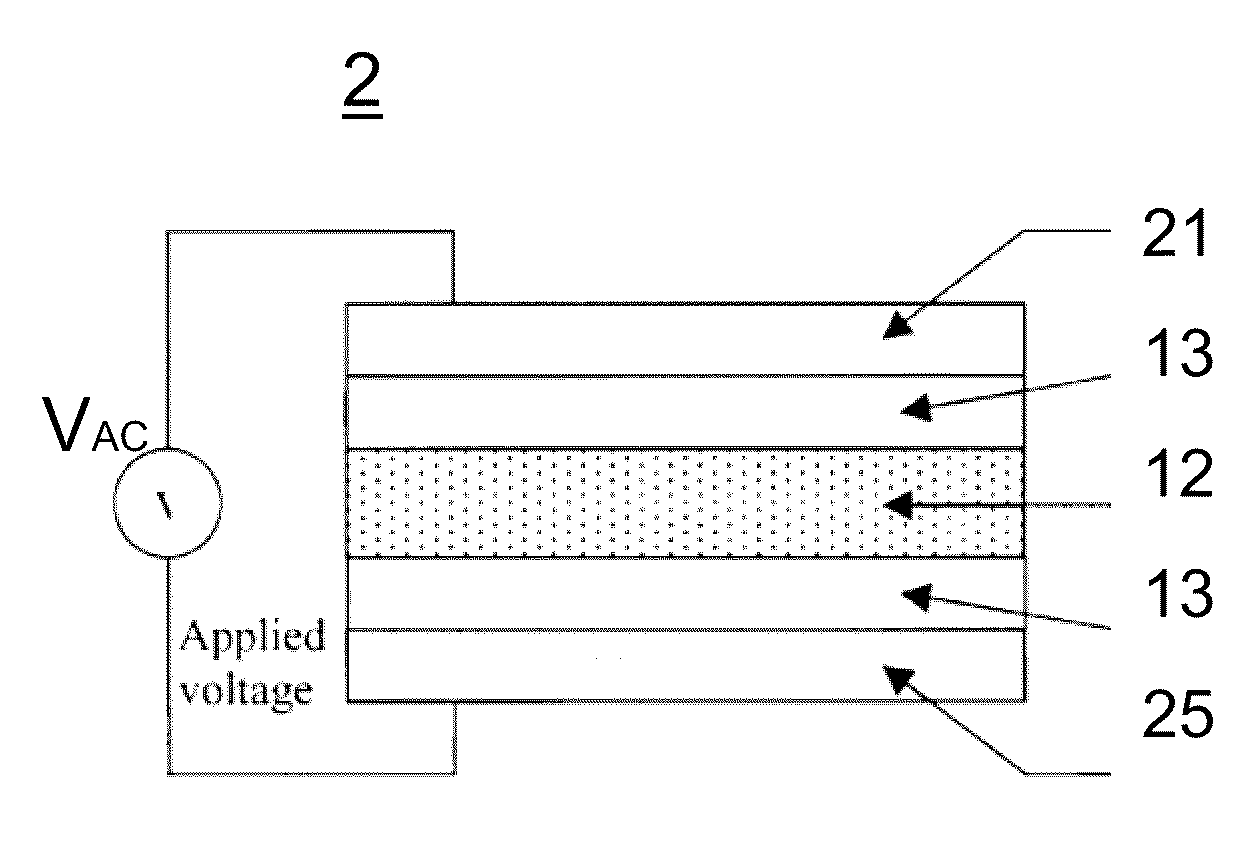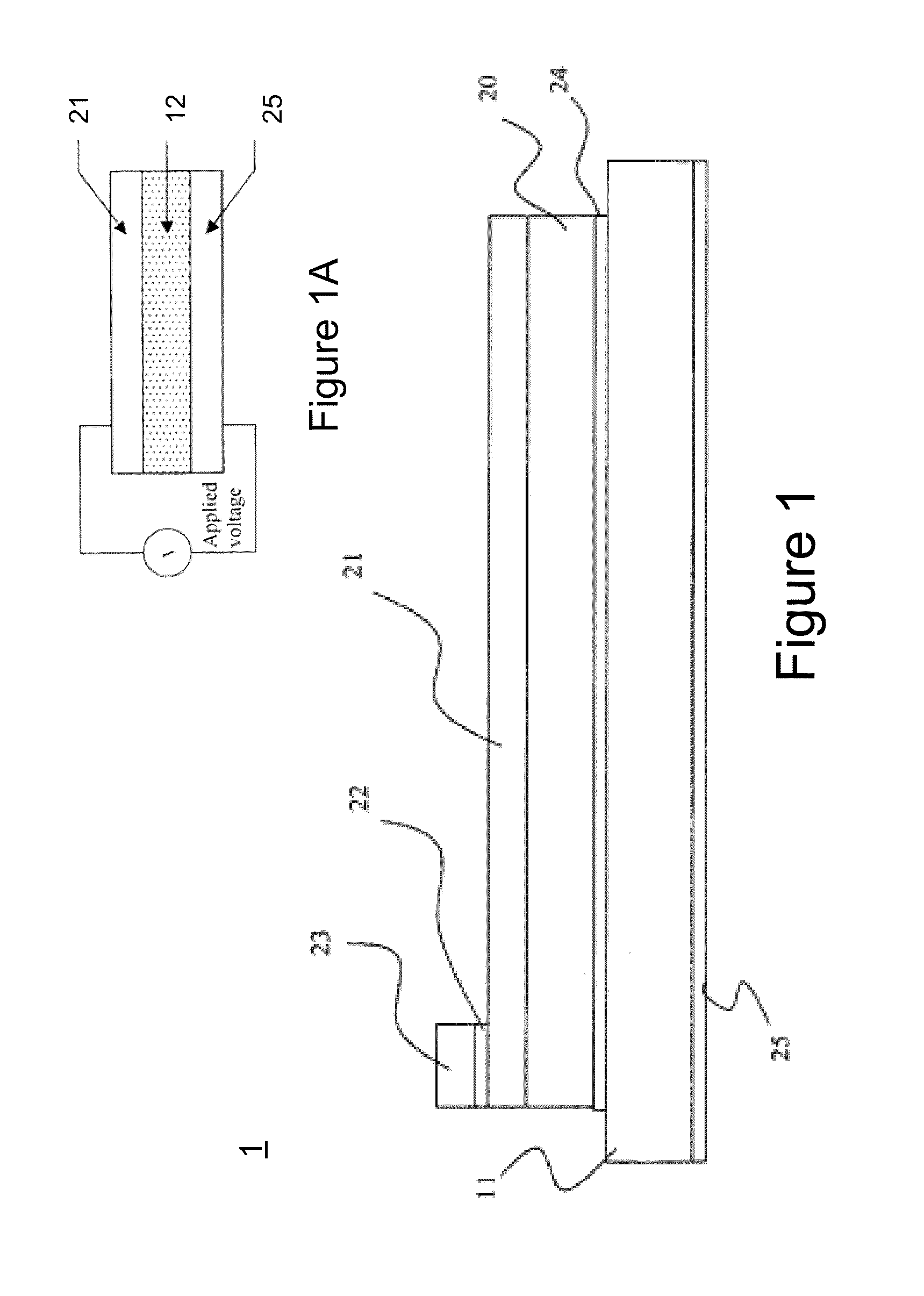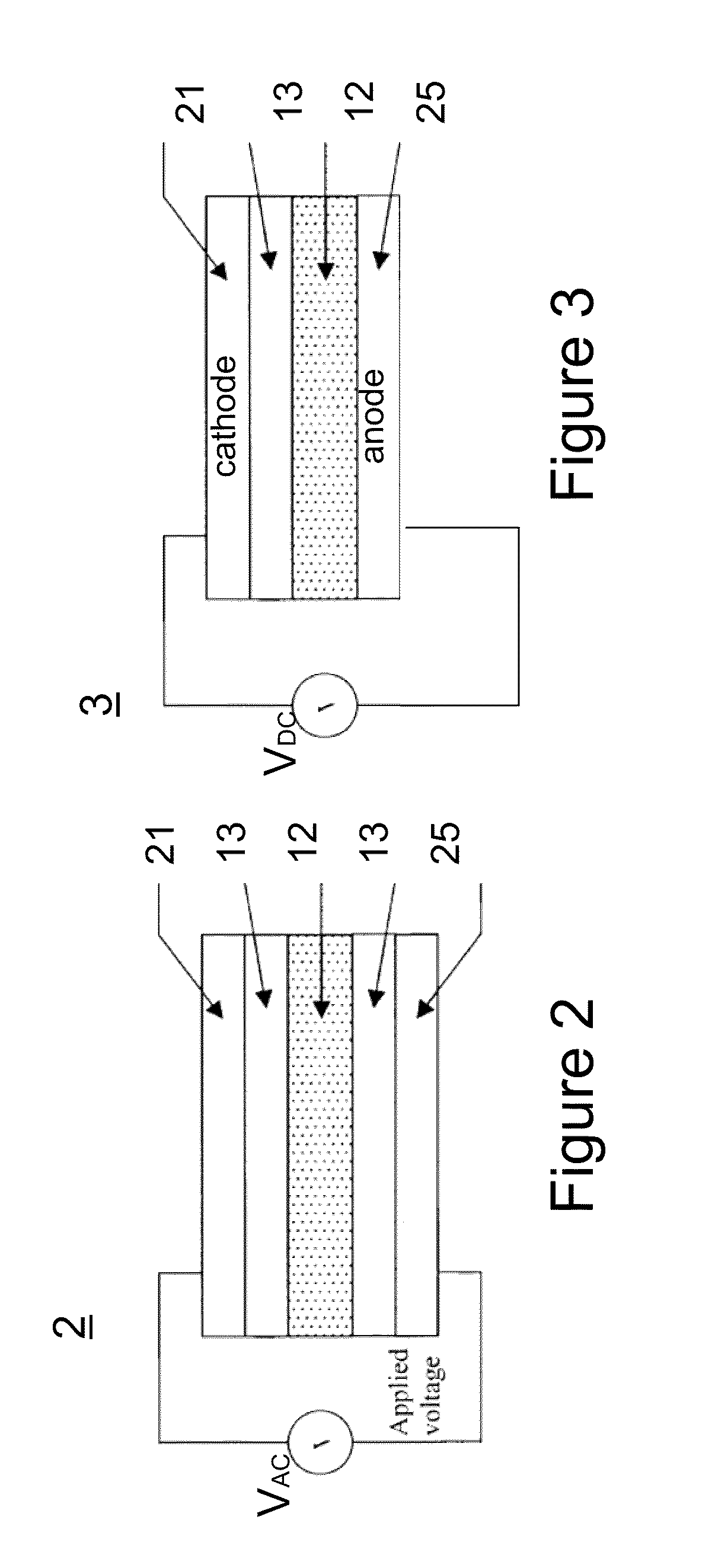Engineered structure for high brightness solid-state light emitters
a technology of solid-state light emitters and engineered structures, which is applied in the direction of solid-state devices, electric lighting sources, and light sources with electric components, etc., can solve the problems of reducing efficiency, reducing light emission, and reducing efficiency, so as to improve luminous efficacy and brightness.
- Summary
- Abstract
- Description
- Claims
- Application Information
AI Technical Summary
Benefits of technology
Problems solved by technology
Method used
Image
Examples
example 1
Rare Earth Doped Alumina
[0098]When the host matrix material in which rare earth luminescent species are embedded is aluminum oxide (alumina, Al2O3) rather than silicon dioxide, a number of advantages ensue:[0099]Since alumina is also an oxide, rare earths will be bound to oxygen, so as to be in the correct chemical state to emit light, e.g. as a trivalent state, such as Ce3+.[0100]The microstructure of alumina is such that octahedral cells are formed in which the rare earths can reside, with reduced clustering (C. E. Chryssou, et al, IEEE J. Quantum Electron. 34, 282 (1988)). Because they are strongly bound in these cells, they are unlikely to diffuse through the material, even at elevated temperatures, and therefore they are unlikely to cluster together. Clustering of two of more rare earths together changes their electronic or bonding configuration, so that they are no longer light emitters. The use of alumina helps to avoid this situation, allowing higher concentrations of rare e...
example 2
Rare Earth and Aluminum Co-doped in Silicon Dioxide
[0108]Another material which provides a suitable host matrix material for the active material comprises aluminum doped silicon dioxide. Co-doping of rare earth luminescent species and aluminum into silicon dioxide provides advantages over rare earth doped silicon dioxide host material without aluminum doping by reducing clustering effects. Consequently it may be possible to dope layers with more than the 1 to 5% of rare earth dopants typically used, before clustering effects are observed. Not only does the aluminum doping inhibit clustering effects, when used with certain rare earth dopants, notably cerium, where the bandgap of the host affects the shape of the luminescence spectra, it has been observed that the emission wavelength of the active layer may be shifted in proportion to the amount of aluminum doping. Therefore appropriate selection of rare earth luminescent species and aluminum doping concentration provides for more con...
example 3
Rare Earth Doped Silicon Oxynitrides of the General Structure SiaObNc
[0116]As described with respect to Examples 1 and 2 above, a multilayer structure may be provided comprising a plurality of active layers each comprising a rare earth doped host matrix material of a dielectric material selected to control clustering effects, allowing higher concentrations of rare earth species to be incorporated for higher brightness, and possibly improved efficiency, and / or for colour control. Thus in this example, each active layer comprises a dielectric of the general formula SiaObNc in varying ratios, i.e. nitrogen containing oxides or silicon oxynitrides. The drift layers preferably comprise an appropriate thickness of silicon dioxide, as described above.
[0117]In these examples, addition of nitrogen to the rare earth doped layers provides a red shift in the emission spectrum of the rare earth luminescent species, e.g. cerium, and by adding judicious amounts of nitrogen the desired wavelength ...
PUM
 Login to View More
Login to View More Abstract
Description
Claims
Application Information
 Login to View More
Login to View More - R&D
- Intellectual Property
- Life Sciences
- Materials
- Tech Scout
- Unparalleled Data Quality
- Higher Quality Content
- 60% Fewer Hallucinations
Browse by: Latest US Patents, China's latest patents, Technical Efficacy Thesaurus, Application Domain, Technology Topic, Popular Technical Reports.
© 2025 PatSnap. All rights reserved.Legal|Privacy policy|Modern Slavery Act Transparency Statement|Sitemap|About US| Contact US: help@patsnap.com



